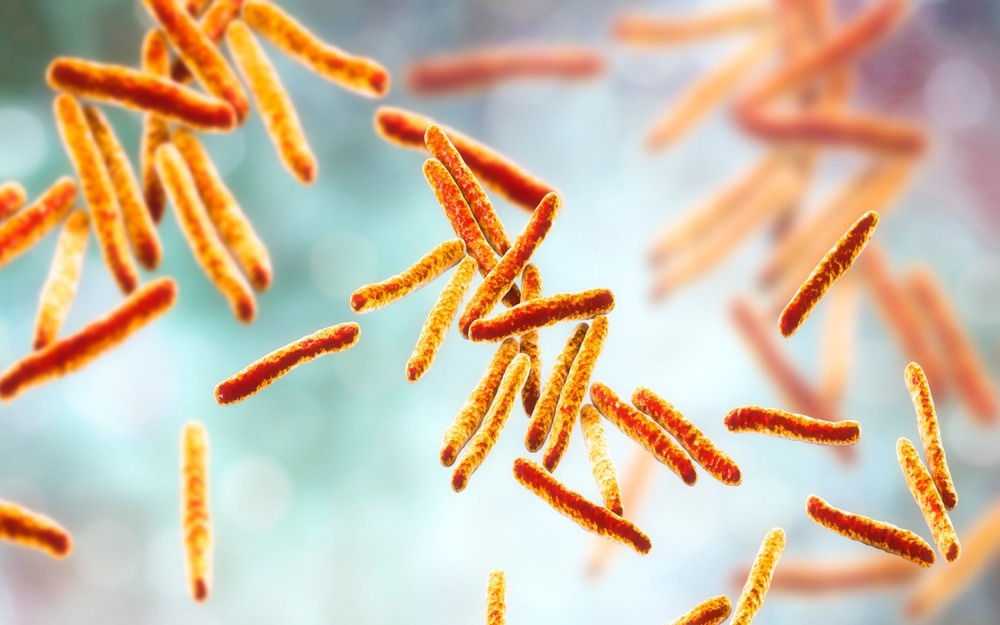In a recent study published in Scientific Reports, researchers reported the first isolation of M. saskatchewanense from medical-grade equipment.
 Study: First isolation of Mycobacterium saskatchewanense from medical devices. Image Credit: Kateryna Kon/Shutterstock.com
Study: First isolation of Mycobacterium saskatchewanense from medical devices. Image Credit: Kateryna Kon/Shutterstock.com
Background
Non-tuberculous mycobacterial (NTM) species are acid-fast organisms that may build biofilms and withstand chemical disinfection treatments. Mycobacterium avium complex (MAC) species, which include M. chimaera, M. avium, and M. intracellulare are common non-tuberculous mycobacteria that cause chronic and widespread disease among immunocompromised individuals. The Accuprobe system revealed Mycobacterium saskatchewanense as a novel, slow-growing, and pigmented non-tuberculous mycobacterium belonging to the MAC group.
Molecular tests based on deoxyribonucleic acid (DNA) STRIP technologies are routinely used to detect clinically essential mycobacterial species from culture materials. However, these swift assays have the potential to misidentify non-tuberculous mycobacteria species. Most non-tuberculous mycobacteria species may currently be identified in microbiology laboratories using mass spectrometry or next-generation sequencing (NGS), which typically requires a solid media subculture.
Non-tuberculous mycobacteria-caused peritonitis is an adverse complication among individuals undergoing peritoneal dialysis. Recent investigations of the risk factors, incidence, and death rates of non-tuberculous mycobacteria infections among individuals with advanced-stage renal disease indicated an elevated risk of death in instances of non-tuberculous mycobacteria diagnosis.
About the study
In the present study, researchers presented the first separation of Mycobacterium saskatchewanense from a significant amount of ultrapure-category dialysis fluid samples, emphasizing the necessity of appropriately detecting non-tuberculous mycobacteria that frequently overrun sanitary water.
The referral center in the Emilia-Romagna Region processed 112 samples of dialysis fluid for mycobacteria detection from environmental materials between August and November 2022. The samples were resuspended in a 0.90% saline solution after being filtered using cellulose nitrate membranes. Decontaminated materials were resuspended in a phosphate-buffered solvent and cultivated for 42.0 days. The mycobacterial presence was confirmed by Ziehl-Neelsen (Z-N) staining.
The team used the GenoType Mycobacterium CM CE-IVD kit (CM) to identify non-tuberculous mycobacteria strains. The GenoType NTM-DR CE-IVD kit (NTM-DR) was utilized to discriminate between distinct species. Sub-culture on solid media was used for colony morphology, and Matrix-Assisted Laser Desorption/Ionization-Time of Flight (MALDI-TOF) mass spectrometry and molecular validation using next-generation sequencing.
Mycobacteria Growth Indicator Tube (MGIT)-isolated positive mycobacterial cultures were recognized as NTM using the deoxyribonucleic acid (DNA) STRIP technique and were tested using the Genotype nono-tuberculous mycobacteria-DR kit to investigate whether they belonged to the MAC group. Positive MGIT was cultured for two weeks using the Middlebrook 7H11 agar medium for phenotypic verification based on microbial growth.
The researchers centrifuged the extracted bacterial biomass followed by spotting on MALDI targets. To confirm mycobacterial identification, they sequenced bacterial strains using the Deeplex mycobacterium tuberculosis (Myc-TB) kit.
Results
The GenoType Mycobacterium CM CE-IVD kit was used to identify non-tuberculous mycobacterium strains. All positive bacterial cultures were determined to be Mycobacterium intracellulare using the GenoType Mycobacterium CM CE-IVD assay and the GenoType NTM-DR CE-IVD kit as components of the Mycobacterium avium complex. Vivid yellow scotochromogenic colonies microbial were observed.
The strains were identified as Mycobacterium saskatchewanense using MALDI-TOF mass spectrometry with scores above 1.8). Next-generation sequencing confirmed mycobacterial identification by 65-kDa heat-shock protein (hsp65) sequencing using the Deeplex mycobacterium tuberculosis test.
Based on acid-fast bacilli staining, 16 (13%) of 112 dialysis fluid Mycobacteria Growth Indicator Tube cultures were positive for non-tuberculous mycobacteria. In contrast, subcultures on Middlebrook 7H11 agar did not yield the predicted colony shape. Mycobacterium saskatchewanense was mistaken for Mycobacterium intracellulare using the deoxyribonucleic acid STRIP technology. Culture is required for non-tuberculous mycobacteria separation; however, colony shape can help identification.
Implications
Overall, the study findings revealed the first Mycobacterium saskatchewanense isolation from medical-grade equipment. Non-tuberculous mycobacteria are a common source of opportunistic infections among immunocompromised individuals. They have emerged as opportunistic infections in hospital settings due to their propensity to develop biofilm and tolerate chemical treatments.
The findings support the researchers' previous findings that subtypes of Mycobacterium chimaera circulating in plumbing networks of hospitals could pass through filters, increasing the possibility of non-tuberculous mycobacteria contaminating other medical-grade equipment (such as hemodialysis systems or endoscope reprocessing apparatus) via water.
Medical equipment or aqueous solution contamination is often linked to infection transmission. The findings emphasized the need to actively monitor non-tuberculous mycobacteria contamination in medical devices using sanitary water to prevent patient infection. Mycobacterium saskatchewanense misclassification using deoxyribonucleic acid STRIP technology indicates that laboratories that use DNA STRIP technology for non-tuberculous mycobacteria identification must use a confirmatory method to achieve the correct classification.